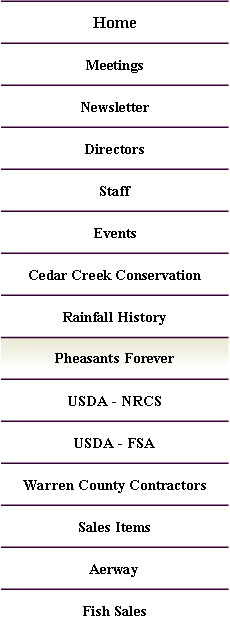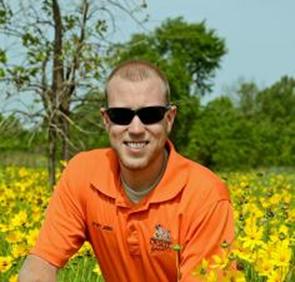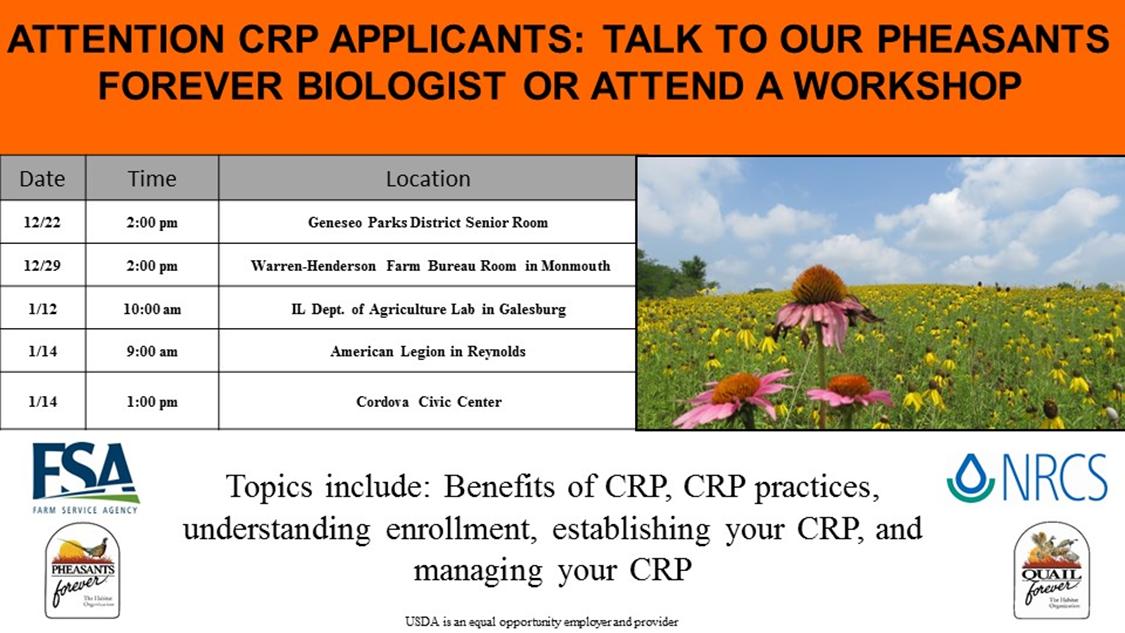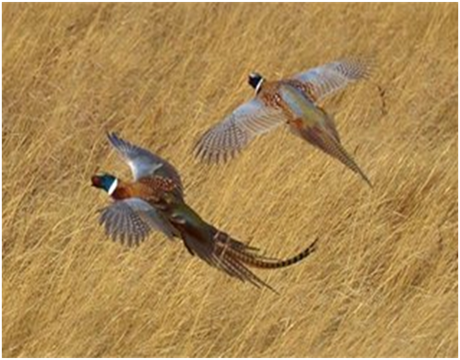
|
Working for Pheasants Forever as a Farm Bill biologist in Warren and adjacent counties, Scott James is a specialized consultant in conservation programs and habitat planning who assists landowners in designing, developing, and funding habitat improvements on private lands. A native of Rock Island County, Scott graduated from Southern Illinois University in 2010 with a Bachelor of Science degree in Zoology. Scott began working as a Farm Bill Biologist for “The Habitat Organization” in Missouri in 2012, where he impacted nearly 12,000 acres of wildlife habitat and he brought a wide range of conservation program knowledge and wildlife background to his new position in Illinois. He is excited to be working in Illinois with a focus on habitat design and habitat management, including controlled burning. For more information about conservation planning on private lands, contact Scott James at (309) 660- 3147 or sjames@pheasantsforever.org |

|
Pheasants Forever USDA & SWCD Partner |

|
Serving Warren County Since 1942 |

|
Scott James Farm Bill Biologist Pheasants Forever |
|
COMING UP State Habitat Convention Par-A-Dice Casino Peoria Illinois January 22-23 More details to come. |

|
USDA Announces General CRP Sign-up While Sustaining Continuous CRP Sign-up Scott James- Pheasants Forever Farm Bill Biologist, Northwest & West-Central Illinois
The Conservation Reserve Program (CRP) is one of the most successful programs in the USDA portfolio—both in terms of environmental benefits and as a consistent source of income to landowners enrolled in the program. The USDA is happy to announce it is proceeding with a Continuous CRP Signup while holding a new General CRP Sign-up. According to the USDA, there are over 84,000 acres worth of contracts set to expire statewide in September 2016 and lack of re-enrollment and new enrollment could damage struggling wildlife populations and parts of the economy. Continuous CRP allows for the year-round enrollment of acres with the highest value to conservation and guarantees acceptance if offered acres meet criteria, while the competitive General CRP allows landowners to offer whole or partial-field enrollment of cropland acres. General CRP offers are then ranked nationally, and the best applications are accepted into the program. More details are provided later in the article. The General Sign-up application period is running now through Feb. 26th. For those concerned about CRP payment rates, payments have become more competitive with commodity markets and land values. The rates are known as Soil Rental Rates (SRR) which are per-acre payments based on common local cash rent rates and predicted soil productivity. Landowners with CRP contracts are then paid an annual rental payment based on the SRRs of the ground they have enrolled. With higher inputs and lower commodity prices than four years ago and unpredictable extremes in weather affecting crops, CRP payments should be very appealing to growers. Details about the options of General CRP and Continuous CRP follow. Rankings for General CRP are calculated based on factors called the Environmental Benefits Index (EBI). Generally, the easiest way to improve your ranking is to apply for practices that provide higher plant diversity. For example, applying for a CP1 (Establishment of Introduced Grasses and Legumes) contract will result in a lower EBI score than an application for CP2 (Establishment of Native Grasses and Broadleafs) combined with a CP42 (Pollinator Habitat) and/or CP12 (Food Plot) block. That is because CP1 is a more “barebones” (lower plant diversity) practice consisting of non-native plants that do not replicate natural grassland communities as well as CP2 and CP42. This year’s signup will probably be highly competitive, so diverse cover practices with higher points increase likelihood of enrollment and help wildlife and resource concerns. If you are confused or uninterested in General CRP and are more interested in an easier enrollment process with added payment incentives, consider Continuous CRP. As referenced earlier, Continuous CRP allows for the non-competitive, year-round enrollment of acres with the highest value to conservation. A few options there include the CP42 pollinator habitat program, the CP9 and CP23 “shallow wetland” programs, and the CP33 habitat buffers for upland birds program. Many of these programs offer signup incentive payments and additional cost-share for establishment. If you would like to learn more about CRP and the application process, as well as ways to improve existing CRP stands for wildlife, help is available. Pheasants Forever is hosting CRP workshops with dates and locations below. Additionally, you can contact me (Scott James) at 309/660-3147 for assistance. |
